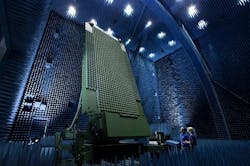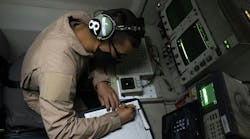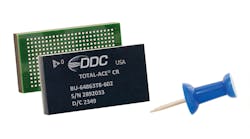Officials of the Air Force Research Laboratory at Wright-Patterson Air Force Base, Ohio, say they plan to issue a solicitation by late March 2014 -- perhaps earlier -- for the Antenna and Electromagnetic Technology research and development program.
The program will ask contractors to make advances in signal processing, system design, phenomenology, modeling and simulation, systems development, and test and evaluation of electromagnetic systems and sensors for military C4ISR programs.
Related: Air Force readies radar and EW research program to improve target tracking and imaging
The program will focus on radio frequency (RF) sensing; antennas; electromagnetic technology; theoretical and computational electromagnetics; sensor test and evaluation; RF distributed and multi-sensor architectures; sensor research management; waveforms, electro-optical sensor technology; and laser detection and ranging (LADAR) technology.
RF sensing will investigate RF sensor technologies that intercept, collect, and geo-locate sensor data that provides situational-awareness capabilities to operational units.
Antennas will aim at advancing air, ground, and space-based antennas, and will involve materials, design, modeling and simulation, fabrication and integration, and testing of antennas.
Related: Two research firms picked for DARPA EW program to counter programmable adaptive radar
Electromagnetic technology seeks to advance detection, tracking, and fusion of data for difficult targets in rapidly varying target, terrain, endo, exoatmospheric, and high-clutter environments. This component will involve electromagnetic scattering theory and situational awareness methodologies, and focus on electromagnetic scattering and signal processing, modeling and simulation, and test prototypes.
Theoretical and computational electromagnetics will revolve around ways to solve computationally intensive electromagnetics and antenna related scenarios, focusing on mathematical solutions to problems, optimization, software development, integration, and testing.
Sensor test and evaluation will center on new ways to advance RF and radar metrology, with an emphasis on signal generation, measurement, diagnostics, and analysis.
Related: Research initiatives pumping new life into phased-array radar
RF distributed and multi-sensor architecture involves advanced sensor models and capabilities in radar surveillance systems, focusing on RF sensor phenomenology, modeling and simulation, algorithm development, and experimentation.
Sensor resource management revolves around the integration of RF, electro-optics (EO), and IR apertures, data buses, and real-time embedded computers on aircraft. The focus will be on RF systems, control systems, real-time data processing, emissions management, and co-site interference mitigation -- all compliant with the AFRL Modular Open Systems Architecture Back End (MOSA-MBE) standard.
Waveforms involves design and detection of agile waveforms, low probability of interception and detection (LPI/LPD) waveforms, and noise waveforms, with a focus on waveform performance, adaptive spectrum use, and the underlying information theory, physics, and environmental phenomena related to waveform generation, transmission, and detection.
Electro-optical sensor technology centers on sensor technologies that advance target detection and surveillance capabilities, with a focus on innovative, timely, and affordable techniques and meet Air Force layered sensing needs in air, space, and cyberspace. LADAR, meanwhile, will involve multi-discriminant LADAR technologies.
Air Force researchers say they expect to choose only one contractor for the Antenna and Electromagnetic Technology research and development program, and should spend about $40 million. The solicitation should be released by March, with an award in July 2014.
For questions or concerns contact the Air Force's Francisco Parada by phone at 937-528-8938, or by email at [email protected], or Shayla Wray by phone at 937-255-0702 or by email at [email protected].
More information is online at https://www.fbo.gov/spg/USAF/AFMC/AFRLWRS/BAA-RQKS-2014-0009/listing.html.



